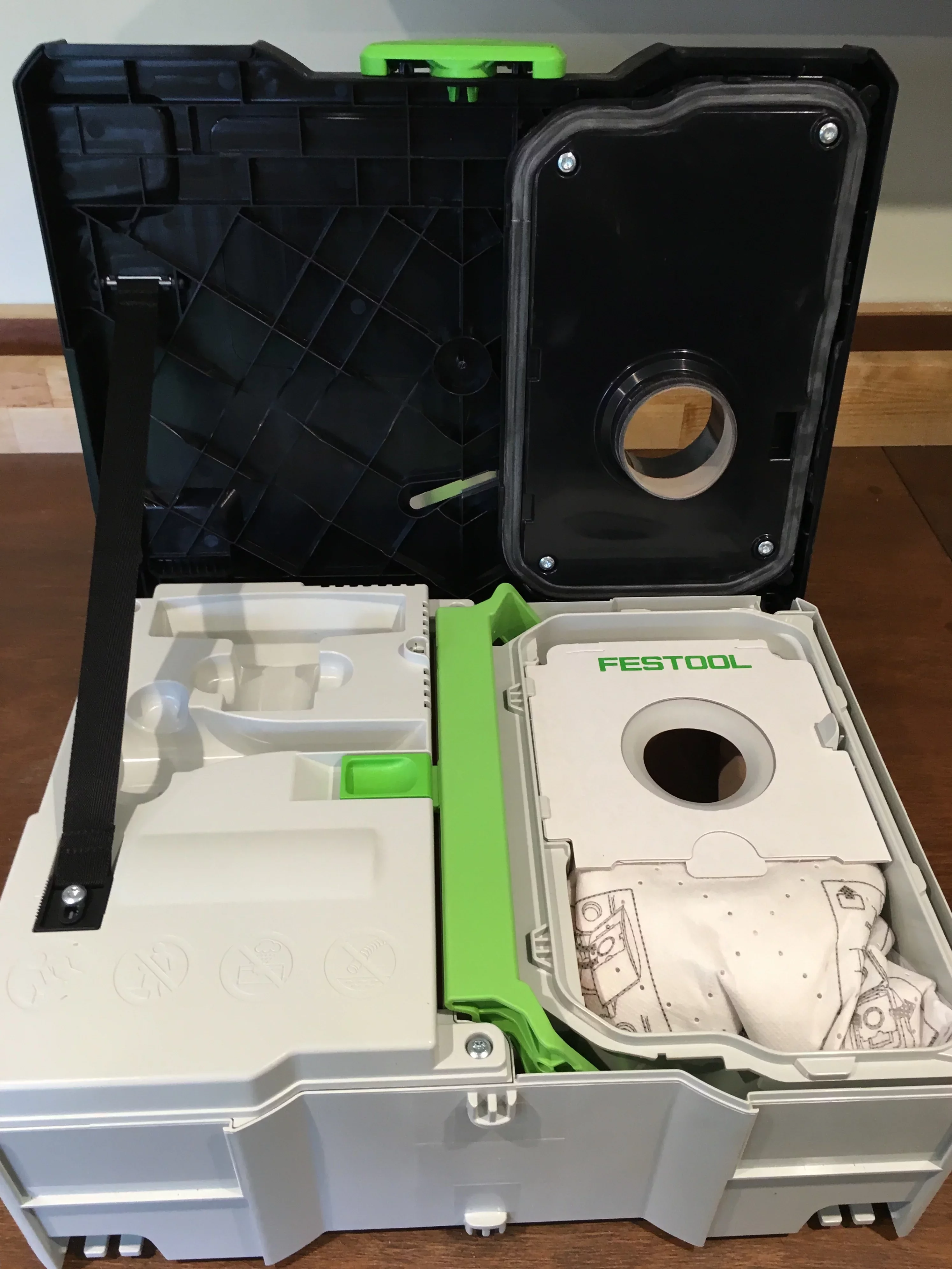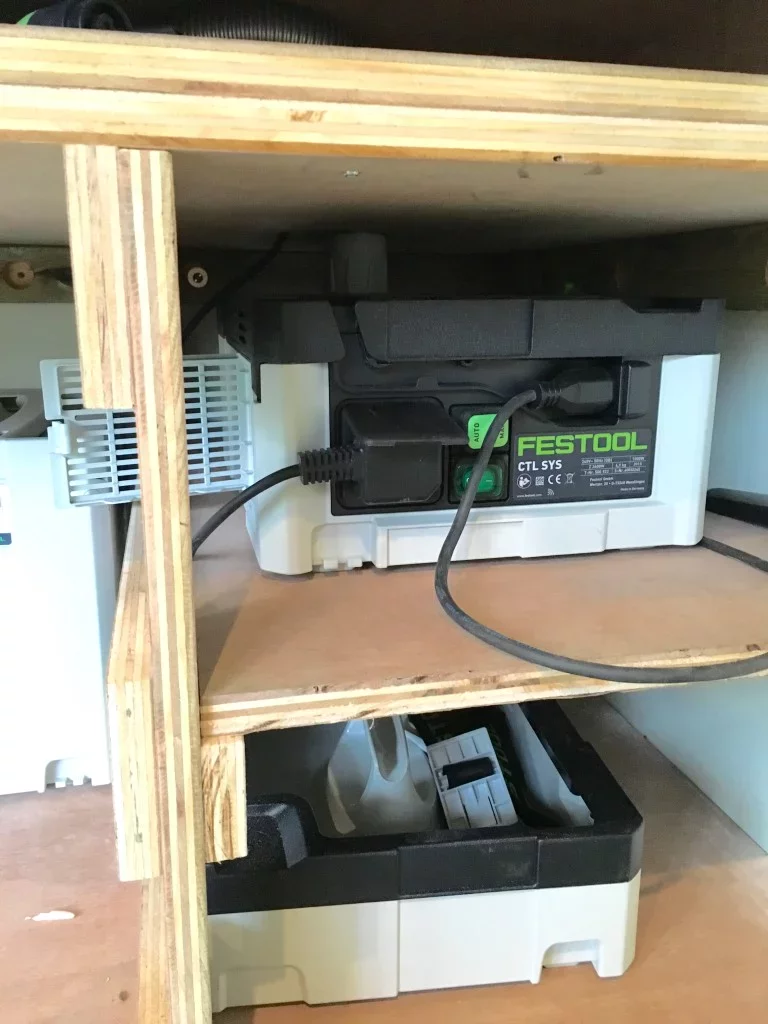Here is a review of the Festool CTL SYS from the perspective of the small workshop user.
Until a couple of weeks ago we had a Sebo hoover in the house but in a stroke of good fortune it broke down. I made a half-hearted attempt to fix it and then persuaded my wife that my nilfisk would be a perfect replacement:

And this was the ideal excuse for me to get one of these for the shed:

… a portable shop vac by Festool. The vac is in a SYSTAINER format – the removable top section holds the hose and a carrying strap and the base contains the bag and motor, plus storage for the power cable and nozzle

Obviously it is intended to be carried around and used for small jobs, although I wonder how practical it would be to have continually replace the tiny bags (which sell for typically gobsmacking Festool amounts) but for a workshop vac, attached to some kind of dust collection like the Dust Deputy, it is ideal.It is very quiet, and has has surprisingly good airflow for the size: 3000 l/min vs 3600 for the much larger nilfisk. In practice I could not tell the difference between the two in terms of suction. The 3m antistatic hose is high quality, as you would expect from Festool.There are limitations that may deter some people:
- No 110v version is available which may put off people working on building sites in the UK where 110v equipment is normally used
- the inlet is in the top of the systainer – this means that dust deputy users can’t mount it under the DD container.
- the appliance socket is limited to 1200 watts which will mean the auto-on feature may not work for some power hungry tools
- no variable speed control (e.g to reduce suction when attached to a sander)
According to the festool user forum many people are particularly exercised by the final omission, although it should be noted there are mechanical solutions, including using a blast gate that can be partially closed to reduce the airflow, as I do, or the equally straightforward adoption of a nozzle with a sliding vent.For my purposes, and for others where space is a primary consideration , it may well be just the ticket.Interesting fact, the vac has a port on the back for the exhaust so it can act as a blower. Here is someone using it to run a paint gun[youtube width=”100%” height=”100%” autoplay=”false”]https://youtu.be/267wZ667S6Y[/youtube]I did a small upgrade to my heath robbinson vac connection:


As ever getting vacuum connectors and hoses was both preposterously difficult and expensive – in the end I gave up trying to get all the components and bought a festool accessory – £21 and a big improvement on my home made version.Here it is installed:

*updated Oct 2015* I have been using it regularly for over a month now and I can’t think of anything I would change about the way it is set up. The Dust deputy is working well also – as you can see from the pics below, the bag is empty (there is a very fine layer of dust on the inside) and the filter looks like new.


Update
After many months of use, the vac continues to work perfectly, indeed I can offer a little anecdotal evidence for the quality of the machine since, in a fit of buffoonery, I left it vacuuming for over 40 hours (!) last week having forgotten to turn it off when leaving the workshop.
When I discovered my blunder the workshop was so hot I assumed the small air heater I have in there must have malfunctioned. Instead it seems the unseasonal warmth was a result of the vac running continuously for a couple of days.Although the room was very hot the vac itself was still just warm to the touch and it works just as well as before. Good work Festool! One other surprisingly useful ‘feature’ I have discovered is that when you are hoovering up large chips and one becomes wedged somewhere in the hose you can connect the hose to the rear port of the machine and it will blow out any blockages. Ingenious!